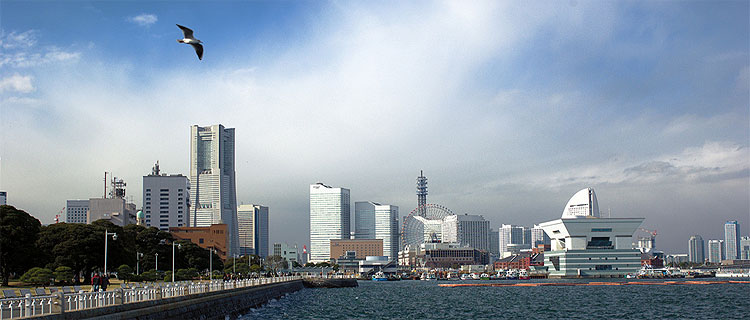
Cities and biodiversity
Combating climate change with urban innovation
With rich biodiversity, cities have enormous potential to mitigate climate change.
It's an interesting paradox when you think about it: production and consumption activities heavily concentrated in cities have contributed to some 80 percent of all greenhouse gas emissions. Yet innovative solutions to combating climate change will also come from cities.
Take the Japanese district of Yokohama, for instance. Home to more than 3,5 million people, the district emitted almost 20 million tons of CO2 in 2007 because of ongoing forest and farmland degradation and extensive construction work. The consequences were significant, as the increase of buildings and paved surfaces resulted in an urban heat island effect that slowed the cooling of the land surface.
Enormous potential
Faced with a warming city, Yokohama recognized the importance of biodiversity in stabilizing the local climate. Revenues from a new tax system were used to conserve green areas, and roof tops and walls were fitted with greenery. Encouraged by the prospects of becoming a low-carbon city, Yokohama now aims to reduce per capita emissions by at least 60 percent by 2050.
"Cities have enormous potential in taking better advantage of the biodiversity located in, around and flowing through them," says professor Thomas Elmqvist. He is a researcher at Stockholm Resilience Centre and the editor of the Cities and Biodiversity Outlook, the world's first assessment of biodiversity in cities. The Outlook is produced for the UN Convention on Biological Diversity and will be pre-launched during Rio+20 in June.
So how can cities specifically contribute to climate change mitigation? The possibilities are many.
What to do
The more compact a city is, the smaller spatial footprint it has. This means that larger outlying green areas can be preserved. And more green space generally means more vegetation that can act as a carbon sink for offsetting urban emissions.
Another solution is the preservation and creation of "green corridors" that can connect larger green patches. Even road bridges and tunnels can stitch together green fragments. The overall impact is that humans and non-humans alike are able to access various urban and ecological nodes within and outside the city.
In fact, the management of green areas and the restoration of ecosystems allow cities to address the concerns of all three sister Rio Conventions: climate change, biodiversity and land management (avoiding desertification).
"Green corridors that provide connectivity between natural spaces allow species greater access to nature, which in turns means better health, cheaper drinking water, and temperature regulation. Green cities are crucial for building climate change resilience," says Mr. Braulio Dias, Executive Secretary of the Convention on Biological Diversity. The 193 Parties of the Convention have adopted a Plan of Action to involve cities, among others, in its programme of work on climate change and biodiversity.
Urban "brownfields", or land previously used for industrial purposes or certain commercial uses, can also be used constructively. If turned into natural habitats with minimal human interference, these areas can turn into carbon sinks rather than emission sources. They can also protect against flooding caused by heavy storms.
Work with what you've got
The prospect of turning roofs and walls into green infrastructure, similar to the projects in Yokohama, can also have significant advantages and effectively blur the distinction between landscape and buildings. That comes with a range of benefits.
"Green roofs can absorb excess water, and help regulate micro-climates and provide habitats for species. Vertical greening, such as growing shrubs and vines on the surfaces of tall buildings, can also reduce the heat-island effect of buildings and pavements. All these measures contribute significantly to both climate adaptation and mitigation," Elmqvist says.
What is important, according to Elmqvist, is to develop and incorporate already existing green spaces into the functional infrastructure of a city.
"The innovation lies not so much in developing new infrastructural technologies but to work with what we already have. The results are often far cheaper and more sustainable as well," Elmqvist concludes.
See video with Thomas Elmqvist explaining the many links between urbanization, biodiversity and ecosystem services:
Related info
The Cities and Biodiversity Outlook, the first global assessment of the impacts of urbanization on biodiversity and ecosystems, will be released Monday, 18 June, 2012 at the Rio+20 Global Town Hall.
Read more about the Cities and Biodiversity Outlook here
Visiting address: Albanovägen 28. Disability entrance: Albanovägen 18
Deliveries: Roslagsvägen 28
Postal address (courier packages):
Stockholms Universitet
Stockholm Resilience Center
[Recipient]
Frescativägen 8
114 18 Stockholm
Sweden
Postal address (letters):
Stockholms Universitet
Stockholm Resilience Center
[Recipient]
Frescativägen 8
SE-106 91 Stockholm
Sweden
Phone: +46 8 674 70 70
Organisation number: 202100-3062
VAT No: SE202100306201






